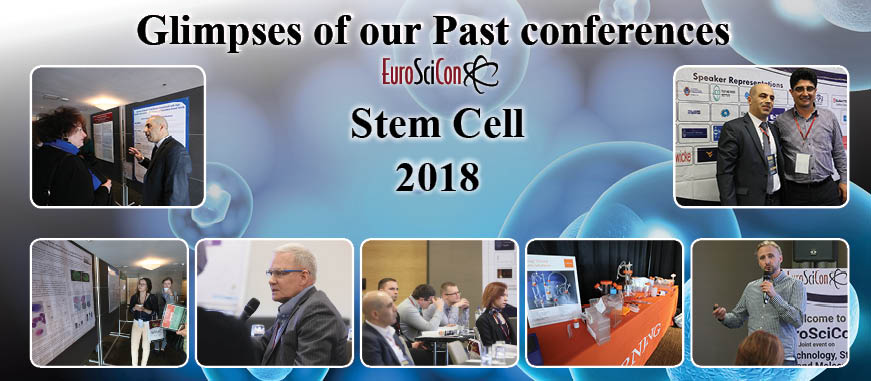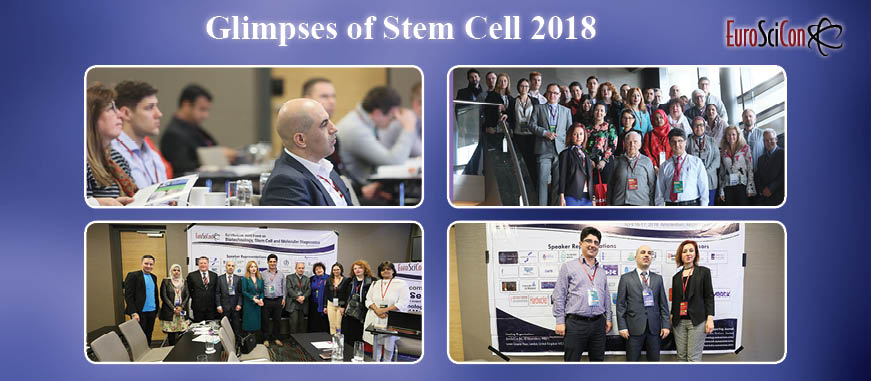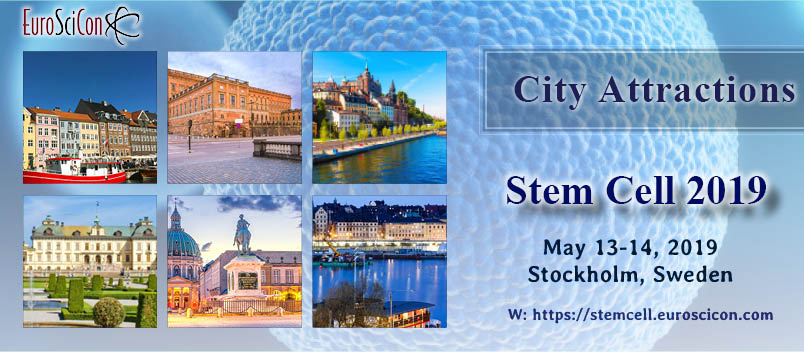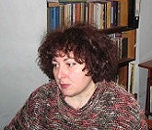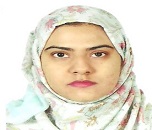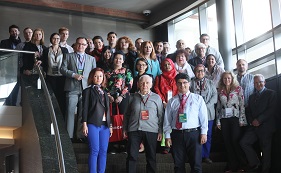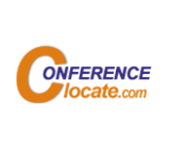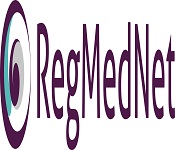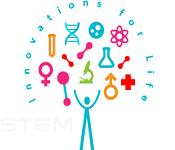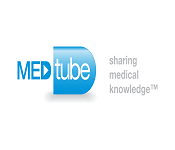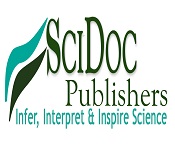Stem Cell 2019
About Conference
The EuroSciCon is going to organize Stem Cell Conferences which scheduled from May 13-14, 2019 in Stockholm, Sweden, focusing on the present and future technologies in Stem Cell. The theme of this year’s meeting is “Advancing new progression & horizon of Stem Cell research”. Stem Cell 2019 conference aim is to provide the recent research topics where all the participants would get the opportunity to discuss the latest developments in the field of Stem Cell and Regenerative Medicine as well. Current studies of Stem cell are examining how undifferentiated organisms might be utilized to anticipate or fix sicknesses and wounds, for example, Parkinson's illness, type 1 diabetes, coronary illness, spinal string damage, strong dystrophy, Alzheimer's malady, strokes, consumes, osteoarthritis, vision and hearing misfortune. Immature microorganisms could likewise be utilized to supplant or repair tissue harmed by ailment or damage.
What’s New?
Stem cell 2019 incorporates worldwide participant workshops, addresses, and symposia, with an assigned enrollment zone, a refreshment break, and occasion lunch. So come and join the main skill individuals in the field of Cell and Gene treatment and associated experts from May 09-10, 2019 in Stockholm, Sweden to stay aware of the quickly quickening pace of progress that is as of now affecting the field of Cell and Gene Therapy and will keep on later on.
Why attend???
With people from all around the globe, focused on finding about Stem Cell and Regenerative Medicine and its advances; this is your most obvious opportunity to accomplish the greatest social affair of individuals from the Stem Cell and Regenerative Medicine society. Prominent identities, Directors, CEO, President, Vice-president, Organizations, Associations Heads and Professors, Research researchers, Stem Cell lab heads, Post-docs, Students different members identified with the zone of Stem cells inquire about, regenerative medication can be as Target Audience.
Who Are Attending ?
- Stem Cell Researchers
- Regenerative drug Scientists
- Stem Cells professionalists
- Emeritus and Academic teachers
- Cell Biologists
- Genetic researchers
- Tissue engineers
- Stemcell investigate understudies
- Cell advisor
- Deans and Professors
- Directors, CEOs, Presidents and Vice Presidents
- University Faculty
- Medical Schools/Colleges
- Associations and Societies identified with Stem cell and Regenerative Medicine R&D
- Stem cell and Regenerative Medicine Program Organizing Government and Non-Government Organizations
- Business Entrepreneurs
- Drug Manufacturing Companies
- Stem cell and Regenerative Medicine Developers and Investigators
About Stockholm, Sweden
Stockholm, the capital of Sweden, comprises 14 islands and more than 50 bridges on an extensive Baltic Sea archipelago. The cobblestone streets and ochre-colored buildings of Gamla Stan (the old town) are home-based to the 13th-century Storkyrkan Cathedral, the Kungliga Slottet Royal Palace, and the Nobel Museum, which focuses on the Nobel Prize. Ferries and sightseeing boats shuttle passengers between the islands. Stockholm is also the traditional, media, a political, and economic focus of Sweden. The Stockholm region alone accounts for over a third of the country’s GDP and is among the top 10 regions in Europe by GDP per capita. It is an important global city and the main center for corporate headquarters in the Nordic region. The city is home to some of Europe’s top ranking universities, such as the Stockholm School of Economics, Karolinska Institute and Royal Institute of Technology (KTH). It hosts the annual Nobel Prize ceremonies and banquet at the Stockholm Concert Hall and Stockholm City Hall. One of the city’s most esteemed museums, the Vasa Museum, is the most visited non-art museum in Scandinavia. The Stockholm metro, opened in 1950, is well known for the decor of its stations; it has been called the longest art gallery in the world. Sweden’s national football arena is located north of the city center, in Solana. Ericsson Globe, the national indoor arena, is in the southern part of the city. The city was the host of the 1912 Summer Olympics and hosted the horse-riding portion of the 1956 Summer Olympics otherwise held in Melbourne, Victoria, Australia.
Sessions & Tracks
Stem Cells:
Undifferentiated cells are organic cells that can separate into different kinds of cells and can partition to deliver business as usual sort of foundational microorganisms. They are found in multicellular life forms. In warm-blooded creatures, there are two wide sorts of undeveloped cells: embryonic juvenile microorganisms, which are detached from the inward cell mass of blastocysts, and adult undifferentiated life forms, which are found in various tissues. In grown-up living things, juvenile microorganisms and ancestor cells go about as a repair structure for the body, energizing adult tissues. In a making early life form, youthful microorganisms can isolate into all the particular cells—ectoderm, endoderm and mesoderm - yet furthermore keep up the common turnover of regenerative organs, for instance, blood, skin, or intestinal tissues.
- Craniofacial tissue engineering
- Breakthrough in cell culture technology for tissue engineering
- Cell-based tissue engineering and cell signaling
- In-situ tissue regeneration
- Adipose-derived stem cells for regenerative medicine
- Biomaterials design and technology
- Nanostructures and nanomaterial
Stem Cell Therapy:
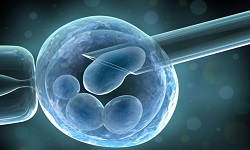
Undifferentiated life form treatment is used to treat or turn away diseases by using undeveloped cells. It has potential in a broad assortment of spaces of potential and healing examination. This treatment is by and large used to supplant or repair hurt cells or tissues. It additionally helps in transplanting energetic microorganisms or giving pharmaceuticals that objective undifferentiated living creatures beginning at now in the body. Undeveloped cell treatment is a rising progression, the recovery of the body part isn't for the most part another idea.
-
Mesenchymal stem cells therapy
-
Adipose stem cell therapy
-
Stem cell replacement
-
Stem cell clinical management
-
Stem cell therapy for cancer
Stem Cell Transplantation:
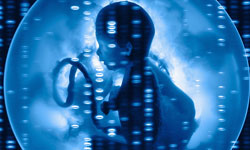
A procedure for supplanting young blood-forming cells in the bone marrow that have been destroyed by solutions, radiation, or disease. Undifferentiated cells are implanted into the patient and make strong platelets. A central microorganism transplant may be autologous (using a patient's own particular undifferentiated cells that were saved before treatment), allogeneic (using undeveloped cells gave by some person who isn't an unclear twin), or syngeneic (using youthful microorganisms gave by a vague twin).
Overall undifferentiated living being grandstand is administering the social protection industry with its strong and monetarily astute method for treatment with less responses. The present market for line blood therapeutics speaks to $6.5 billion, which is depended upon to create at 33.4% CAGR from 2013-2020.
-
Advances in stem cell transplantation
-
Autologous stem cell transplant
-
Cord blood stem cell transplant
-
Embryonic stem cell transplant
Stem Cell Niche:
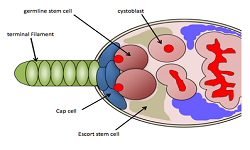
Claim to fame here implies where central microorganisms stay and get sanctioned to particular and increase. Forte Stem Cells demonstrate a strong relationship in keeping dynamic structure (bone marrow claim to fame) helpful. They are the wellspring of released or cell surface factor which joins individual from Notch, Wnt, Fibroblast improvement factor (FGR), Transforming Growth Factor (TGF)- beta, Stem Cell Factor (SCF) and Chemokine families-controls juvenile microorganism restoration, upkeep and survival.
-
Bone Marrow niche- Dynamic/Hyperactive
-
Neural niche- Slow Reactive
-
Transforming Growth Factor
-
Single cell Type
-
Blood cell Niche
Tissue Engineering:
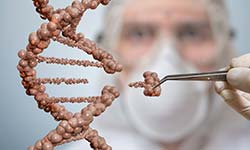
Tissue planning is creating as an essential potential choice or equal course of action, whereby tissue and organ dissatisfaction is had a tendency to by implanting normal, made, or semisynthetic tissue and organ duplicates that are totally valuable from the start, or that form into the required handiness. Basic undertakings have focused on skin partners for treating customers, yet a growing number of tissue creates are as of now being composed, and moreover, biomaterials and stages used as movement systems. An arrangement of techniques are used to persuade isolated or undifferentiated cells, for instance, youthful microorganisms, into the desired cell make. Amazing results consolidate tissue-outlined bone, veins, liver, muscle, and even nerve courses. Due to the remedial and market potential, there is essential insightful and corporate energy for this advancement.
-
Histopathology
-
Tissue biomarkers
-
Tissue graft tolerance
-
Photodynamic therapy
-
Tissue mechanics & mechanobiology
Genetically Modified Stem cell Therapy:
It is a procedural technique which makes use of the genetic cell in adjusting basic microorganisms for treating or hindering illness. Innately Modified cell treatment generally impacts the course of various genetic sicknesses at DNA/RNA level. In Gene Therapy undeveloped cells used are all around set up which has some unusual results for treating various diseases and various are not reparable.
-
Stem Cell Secretome
-
Tissue Repair
-
Molecular Basis of Epigenetics
-
Organ Synthesis
-
Gene Therapy Stem Cell
-
Cord Blood Stem Cells
-
Genes used to produce iPSCs
-
Clinical Trials
Embryonic Stem Cell:

Embryonic Stem cells are pluripotent, which implies they can produce (i.e. partitioned) into all auxiliaries of the three germ layers: ectoderm, endoderm and mesoderm. By the day's end, they can shape into each one of the more than 200 cell sorts of the adult body as long as they are resolved to do all things considered. Embryonic microorganisms are perceived by two absolute properties: their pluripotency, and their ability to repeat tentatively. These consolidate each one of the more than 220 cell writes in the adult body. Pluripotency perceives embryonic stem cell from grown-up juvenile microorganisms found in adults; while embryonic primary microorganisms can make all cell creates in the body, grown-up undeveloped cells are multipotent and can convey only a set number of cell composes. Besides, under described conditions, embryonic youthful microorganisms are prepared for multiplying themselves uncertainly. This empowers embryonic undifferentiated life forms to be used as supportive instruments for both research and regenerative pharmaceutical, since they can make unlimited amounts of themselves for continued with examine or clinical use.
-
Embryonic stem cell
-
Embryonic stem cell research
-
Pro embryonic stem cell research
-
Human embryonic stem cells
Cancer Stem Cell:
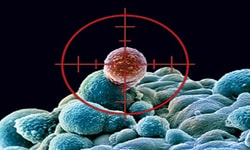
Development Stem Cells are those cells which are uncommon unfading inside a tumor that can both self-restore by secluding and offer climb to various new cell composes that constitute the tumor. Danger starting microorganisms are little subpopulation of tumor cells with the limit of tumorogenecity, dedifferentiation, chemo and radiotherapy impediment which in the end result in tumor lose the faith.
-
Cell surface Markers Therapy
-
Potential Surface Biomarkers
-
Colorectal cancer
-
Breast Cancer
Nanotechnology in Stem Cells:
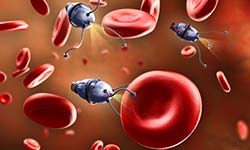
Nanotechnology is the branch of innovation that arrangements with little things that are less 100 nm in measure. Here, to handle the situation of immature microorganisms for some biotherapeutic applications we have to work at the size sizes of atoms and procedures that administer undeveloped cells destiny. Nanotechnology and nanoscience offers monstrous advantages to people with powerful amalgamation of nanotechnology and undeveloped cells.
-
Genetic Engineering nanotechnology and robotics
-
Nanotechnology gene therapy
-
Nanotechnology Ethical issues
-
2D Nanotopography
-
3D Nanoscaffolds
-
Nanoimprint Lithography
Application of stem cell in Medicine:
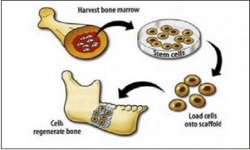
Undifferentiated organism treatments convey gigantic potential for treating various human infections. Anyway the interest for contributor's organs exceeds the accessibility by gigantic extents. Another ordinarily confronted test of organ transplants is the occurrence of dismissal because of the beneficiary's insusceptible framework. The utilization of foundational microorganisms for producing tissues and organ unites holds colossal guarantee to satisfy the generally neglected requirement for organ transplants and to enhance the personal satisfaction for many patients.
Foundational microorganism can be coordinated to produce particular cell composes and can be utilized to supplant weak or worsening tissues. The best preferred standpoint of this method is that it beats join to have incongruence. Such tissues are created from the patient's own undifferentiated cells. Consequently, the odds of unite dismissal by the host's resistant framework diminish fundamentally. Immature microorganisms have been utilized in the treatment of spinal string wounds, stroke, consumes, diabetes, cardiovascular illnesses, osteoarthritis, rheumatoid joint pain and so on.
-
Stem Cells in the treatment of Cardiovascular Diseases
-
Stem Cells in Bone Regeneration
-
Stem Cells in the Treatment of Eyesight
-
Stem Cells in the Treatment of Diabetes
-
Stem Cells in the Treatment of Neurodegenerative Disorders
-
Stem Cells in Wound Healing
Stem cell in Drug Development:
Undifferentiated cell treatment has opened another road in the territory of medication disclosure and improvement. Biopharmaceutical organizations have been working in interpreting fundamental utilizations of undifferentiated cell advances in the medication improvement forms in order to diminish the high weakening rate generally arrange sedate applicants, which has been developing at a quick pace in the previous decade. Approach of immature microorganism advances has given new prospects to fabricate imaginative cell models. The always developing systems utilized for detachment of human/creature embryonic foundational microorganisms (ESCs), bone marrow-determined mesenchymal undeveloped cells, umbilical line undifferentiated organisms, grown-up tissue-particular neural immature microorganisms and human instigated pluripotent foundational microorganisms (iPSC) have prompted the headway of various high throughput and combinatorial screening advancements consequently supplementing the part of undifferentiated organism models in sedate disclosure
-
Cancer clinical trails
-
Clinical research and bioethics
-
Drug screening tools
-
Stem cell biology and regenerative medicine
-
Drug safety and regulations
Stem Cells for Organ Repair:
It has been expressed that undifferentiated cells have a capacity to create a substantial number of cells which thusly helps in shaping the devastated tissue or an organ. Conversely, undeveloped cells can likewise be helped in repairingthe harmed organs, in which the instrument does in two unique choices: bolster component and supplant alternative. The help instrument of the undeveloped cell is recovery or the regrowth of the tissue or organ cells keeping away from inconvenient fibrosis. The supplant alternative of the stem cellis to transplant the foundational microorganism.
-
The Seeds of Regeneration
-
Cell transplantation Therapy
-
Stem Cells to Liver Tissues
-
Stem Cell Exosomes
-
Hematopoietic Stem Cell Homing
-
Mesenchymal stem cells: harnessing cell plasticity
Stem Cell Apoptosis and Signal Transduction:

Apoptosis, a molecularly directed type of cell passing, is basic for the typical working and homeostasis of most multicellular creatures. Apoptosis is directed by a portion of a similar flag transduction pathways already embroiled in other physiological cell reactions. Self-recharging and multiplication of immature microorganism populace are controlled by Apoptosis. Apoptosis of undeveloped cells is accepted to be a dynamic procedure which changes in light of natural conditions. Controlling apoptosis is additionally an imperative concentration for investigations of foundational microorganism transplantation. Abusing the full remedial capability of undifferentiated cells will require full translation of the flag transduction torrential slides for expansion, separation, and apoptosis.
-
Ubiquitination Pathways
-
Cell Signaling in Stem Cells
-
Cellular Proliferation and Tumor Growth
-
Cellular Senescence and Pathways in Aging
-
Molecular & Genomics analysis of Cancer
-
Cancer Stem Cells and impaired apoptosis
-
Apoptosis Transcription Factors and Regulators
Tissue Aging:
The immature microorganism hypothesis of maturing proposes that the maturing procedure is the consequence of the powerlessness of different sorts of undifferentiated cells to keep on replenishing the tissues of a living being with useful separated cells equipped for keeping up unique capacity of the tissue. Hostile to Aging is the procedure or strategy that is proposed to anticipate or constrain the way toward getting to be old. Persisting youth may be achieved if maturing could be halted at an energetic age, however it appears to be impossible that the harm to organs, tissues, cells, and particles known as maturing can be ceased totally by supplanting or repairing those harmed organs, tissues, cells and even atoms appears like a superior technique. These procedures can reestablish capacity to old life forms or can even restore. In numerous tissues, there is an age-related diminishing in undeveloped cell helpfulness anyway not a fatigue of Stem Cells. Such revelations have huge result for the foundational microorganism based treatment of the age-related turmoil.
-
Theories Of Ageing
-
Ageing Demographics
-
Genetics Of Ageing and Life Span
-
Reverses ageing process
-
Rejuvenation
-
Ageing Disorders
-
Ageing Technology
-
Clinical Trials Of Ageing
Reprogramming Stem Cells: Computational Biology:
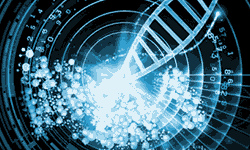
Computational science, a branch of science including the use of PCs and software engineering to the comprehension and displaying of the structures and procedures of life. It involves the utilization of computational techniques for the portrayal and reproduction of organic frameworks, and in addition for the elucidation of trial information, frequently on a vast scale. The fields of foundational microorganism science and regenerative medication investigate are on a very basic level about understanding unique cell procedures, for example, improvement, reinventing, repair, separation and the misfortune, procurement or support of pluripotency. So as to unequivocally decode these procedures at a sub-atomic level, it is basic to distinguish and think about key administrative qualities and transcriptional circuits. Current high-throughput atomic profiling innovations give an intense way to deal with tending to these inquiries as they permit the profiling of a huge number of quality items in a solitary test. While bioinformatics is utilized to translate the data created by such advancements.
-
Bioinformatics Analysis of Stem Cells
-
Computational Tools for Stem Cell Biology
-
Gene expression analysis
-
Computation in Stem Cell and Developmental Biology
-
Computational Evolutionary Biology
-
Cellular Computing And Drug Discovery
-
Bio-Robotics and biosensors
-
Novel Gene Regulatory Networks
Stem cell Biomarkers:
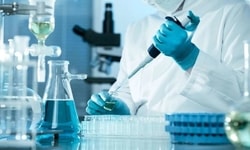
Bio marker is an organic atom found in blood, other body liquids, or tissues that is an indication of a typical or irregular process, or of a condition or infection. A bio marker might be utilized to perceive how well the body reacts to a treatment for an ailment or condition. In disease research and pharmaceutical, bio markers are utilized as a part of three essential ways:
• To help analyze conditions, as on account of distinguishing beginning period malignancies (Diagnostic).
• To gauge how forceful a condition is, as on account of deciding a patient's capacity to toll without treatment (Prognostic).
-
Cancer Stem Cell Biomarkers
-
Trophoblast Stem Cell Biomarkers
-
Cardiac Stem Cell Biomarkers
-
Hematopoietic Stem Cell Biomarkers
-
Skin Stem Cell Markers
-
Retinal Stem Cell Markers
Bioprocessing & Bio Banking:
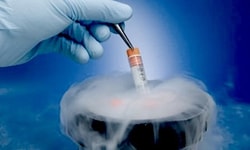
Bioprocessing is an innovation utilized for exchanging the ebb and flow lab based routine with regards to undeveloped cell tissue culture to the clinical research as therapeutics requires for the utilization of designing standards and practices to accomplish control, robotization, wellbeing, approval and reproducibility of the procedure and the item. Biobanks are the kind of biorepositories which gathers, procedures, stores and circulates biospecimens to help future logical examination. This assumes a vital part in helping the scientists giving the foundation information of the subject.
-
Cell Bioprocessing
-
Cell Isolation & Cultivation
-
Biological specimens
-
Genomic and genetic disorders biobank
-
Whole exon sequencing for rare disease
-
Vitiligo biobank
3D Bioprinting & Biofabrication:
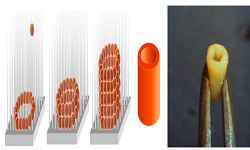
3D printing is a 3-dimentional printing machine which gives the data of a 2D picture as 3D question. The layer of materials to frame a 3D question is controlled by the PC by giving geometry of the protest. 3D Bioprinting helps Tissue Engineering by giving a top to bottom data of the picture and structure examination of the picture, which helps in tackling the basic issues. Biofabrication is alluded to the creation of counterfeit tissues or organs to address wellbeing challengesin prescription. It frequently utilizes the standard of 3D Bioprinting to frame cells, gels and strands into an organ.
-
3D Printing for Life science
-
Material consideration for 3D Printing in Tissue Engineering
-
Importance of 3D Bio printing
-
Additive Manufacturing and Other Platforms for 3D-Printing
-
3D-Printing, Biofabrication and Bioprinting using Microfluidics
-
Bioinks
-
Engineered Tissue
-
Innovative Development in 3D-Bioprinting
Alternative Medicine In Stem Cell:

Immature microorganism explore has pulled in an uncommon measure of consideration and desire because of its potential for applications in the treatment of various restorative conditions. These energizing clinical prospects have produced far reaching support from both the general population and private divisions, and various preclinical investigations and thorough clinical preliminaries have just been started. Late years, in any case, have likewise observed disturbing development in the number and assortment of cases of clinical employments of notional 'undeveloped cells' that have not been satisfactorily tried for security as well as viability.
Novel Stem Cell Technologies:
Undeveloped cell Therapeutics is a progressive change in the realm of current drug. Novel undeveloped cell treatment may change current ideal models for treating heart disappointment patients. Clinical preliminary arranging is in progress at MedStar Heart and Vascular Institute to decide if a novel foundational microorganism treatment will enhance heart work for patients with heart disappointment.
Stem cell & Regenerative Medicine Industry:
Patterns and Perspectives on the Evolving International Landscape introduces a thorough investigation of the development and improvement of the foundational microorganism field, with specific spotlight on embryonic stem (ES) cell and actuated pluripotent stem (iPS) cell look into yields.
MarketsandMarkets is a worldwide statistical surveying and counseling organization situated in the U.S. We distribute deliberately examined statistical surveying reports and fill in as a business insight accomplice to Fortune 500 organizations over the world.
-
Trends in the Stem cell& Regenerative Medicine Industry
-
Stem cell& Regenerative Medicine in drug development
Ethical Issues In Stem Cell Research:
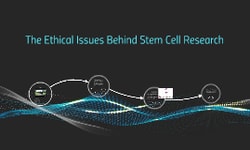
Advance in biotechnology has presented a large group of squeezing moral and approach issues relating to undifferentiated cell investigate. Undifferentiated organism explore offers extraordinary guarantee for understanding fundamental instruments of human improvement and separation. The direction of undifferentiated cell explore is an issue that has drawn much remark, feedback and even legal assertion as of late.
Past Conference Report (Stem Cell 2018)
The EuroSciCon Conference on Stem Cell (Stem Cell 2018) hosted by EuroSciCon Ltd took place at Hyatt Place, Amsterdam Airport, Amsterdam, Netherlands during April 16- 17, 2018. It was organized by EuroSciCon Ltd and generous response was received from the Editorial Board Members of EuroSciCon Ltd Journals as well as from eminent scientists, talented researchers, and young student community. Researchers and students who attended from different parts of the world made the conference one of the most successful and productive events in 2018 from EuroSciCon Ltd. The two-day program witnessed thought provoking keynote and plenary presentations from experts in the field of Stem Cell research field highlighting the theme, "Frontiers in Stem Cells & turning ideas into reality ".
The meeting was carried out through various sessions, in which the discussions were held on the following major scientific tracks:
- Stem Cell Apoptosis And Signal Transduction
- Cancer Stem Cells
- Stem Cell Transplantation & Techniques
- Reprogramming Stem Cells: Computational Biology
- Stem Cell Banking
- Stem Cell Biomarkers
- Epigenetics
- Plant Stem Cells
- Veterinary Stem Cell
- Nanotechnology In Stem Cells
- Tissue Regeneration & Therapeutics
- Alternative Medicine In Stem Cell
- Novel Stem Cell Technologies
- Stem Cell Product Development & Commercialization
- Ethical Issues In Stem Cell Research
The highlights of the meeting were form the eminent keynote lectures from
- Mark Engelman, UK
- Robert Bowen, USA
- Olexandr Korchynskyi, Poland
- Chandan R Bora, Trinidad and Tobago
- Zeliha Selamoglu, Turkey
Stem Cell 2018 played an important role in promoting multidisciplinary interactions between science and medicine to enhance research in Stem Cells and Biotechnology. The program covered current and emerging research innovations in the field of Stem Cells and Biotechnology.
We would specially thank the Moderator of the Utku AVCI, Turkey for his contribution to the conference.
We are obliged to the various delegates from companies and institutes who actively took part in the discussions. We sincerely thank the Organizing Committee Members and Editorial board of Stem Cell 2018 for their gracious presence and continuous support throughout the proceedings of this event. With the valuable feedback and generous response received from the participants of the event, EuroSciCon Ltd would like to announce the commencement of " 2nd Edition of EuroSciCon Conference on Stem Cell " during May 9-10, 2019 at Stockholm, Sweden.
Let us meet again @ Stem Cell 2019
STEM CELL MARKET OVERVIEW
Globally Regenerative Medicines market size is predicted to reach USD 30,237 million by 2022. Recently, Regenerative Medicine has emerged with full of promise approaches to treat and cure complex degenerative disorder and to support, restore the function of tissues and cells in other therapies. North America leads the way of a global market in 2015 and it is expected to remain ascendant during 2015-2022. Stem Cells are used to treat cancer and different immune system diseases. And now Stem Cells are suspected for the treatment in Neurodegenerative Diseases, wound healing, spinal cord injury, etc. The worldwide Stem cell & regenerative medicines market is divided according to product type, application, sources, geography and end users. By the product type stem cells market is again divided into human embryonic stem cells, adult stem cells, IPsec’s, etc. Whereas, regenerative medicines have the capability to regenerate, repair & replace tissues of the organ which are affected due to injury, natural aging process, and some diseases. These medicines are able to restore the performance of cells & tissues, therefore, now researchers are focusing on the new technologies which are basically based on biologics, genes, somatic and stem cells as well. The proliferation and differentiation is the major capability of stem cells owing to which they are of importance in this field. Utilization of Nano-materials in immunomodulation, drug delivery, and wound care make the growth the avenues for the regenerative medicines market.
The regenerative medicine market is broadly divided into three categories namely biologically derived materials, synthetic materials, and genetically engineered materials. The Synthetic materials and biologically derived materials have high demands in the market due to its higher efficiency as compared to other naturally derived materials.
Raw Material Analysis:
For biologically derived materials for regenerative medicines, demand is higher compared to other naturally derived materials due to its efficiency. The procedures say synthetic materials have used hydrogel in tissue engineered scaffolds. This report provides a complete overview of the growth rate of regenerative medicines and stem cells. It is believed that the stem cell market will grow appreciably. Regenerative medicine is a wider field which encompasses the potential to acquire its achievement. Financially, investment in this field is all by grants, private inventors, and publicly traded stocks. Looking ahead, the regenerative medicine and stem cells market is promising for a number of powerful reasons including.
Stem Cell-A new opportunity in Cosmeceuticals Market:
The market was evaluated at $42.24 billion in 2016 and is expected to reach a value of $68.72 billion by 2022, witnessing a CAGR of 8.52% during the predicted period, 2017-2022.
Cosmeceuticals are the emerging market and so there are lots of opportunities lies in the market that is needed to be explored. North America has been declared as the second largest in the market of cosmeceuticals that has estimated for a share of 31% approx. in 2016.
The United States is the major industry for the organic and in North America natural cosmetic products which shares 85% approx. in 2016 with a market value of $10.62 billion. Whereas, the Asia Pacific is the third largest industry for skin care products market which estimated a share of 22% approx. in 2016.
Global Market Study of Stem Cells & Regenerative Medicine:
USA: The regenerative medicine & stem cell market is assuming to reach $38.70 billion by the year 2022 from $ 13.33 billion in 2016 at a CAGR of 23.56%.
Europe: The regenerative medicine & stem cells market is expected to reach USD 13.578 billion by 2022 from USD 5.06 billion in 2016 at a CAGR of 21.80% during the period 2016-2022.
Middle East: The regenerative medicines market is expected $ 40.55 billion revenue in 2022 from $ 17.03 billion revenue in 2016.
Learn More
Top Universities for Stem Cell in Europe:
University of Edinburgh| University of Cambridge | University of Oxford | Karolinska Institute | University College London | University of Copenhagen | Imperial College London | University of Munich | King's College London | Pierre and Marie Curie University | Leiden University | University of Helsinki | Heidelberg University | Utrecht University | Catholic University of Leuven | Uppsala University | University of Groningen | University of Barcelona | Lund University | Technical University of Munich | Queen Mary, University of London | University of Amsterdam | University of Zurich | University of Manchester | Swiss Federal Institute of Technology Zurich | University of Bristol | University of Glasgow | University of Eastern Finland | University of Leicester| University of Strasbourg | VU University Amsterdam | University of Geneva | University of Oslo | University of Milan
Top Universities for Stem Cell in Asia:
University of Hong Kong (HKU) | Peking University | Seoul National University (SNU) | National Taiwan University (NTU) | Osaka University | Tsinghua University | The Chinese University of Hong Kong (CUHK) | Fudan University | The Hong Kong University of Science and Technology (HKUST) | Taipei Medical University | Mahidol University | KAIST - Korea Advanced Institute of Science and Technology | The University of Tokyo | National University of Singapore (NUS) | Kyoto University | Yonsei University | Shanghohoku University Jiao Tong University | Nanyang Technological University (NTU) | Chulalongkorn University | | Tokyo Medical and Dental University | Kyushu University | Nagoya University | University of Science and Technology of China
Top Universities for Stem Cell in the USA:
University of Oxford | Massachusetts Institute of Technology (MIT) | Stanford University | University of California,San Francisco (UCSF) | Yale University | Johns Hopkins University | Texas A & M University | Princeton University | California Institute of Technology Caltech | Cornell University | Georgia Institute of Technology | Emory University | Northwestern University | Michigan State University | Oregon Health & Science University | University of Washington | Brown University | Purdue University | University of Michigan | University of Virginia | University of Wisconsin– Madison | University of Colorado – Boulder | University of Miami | Duke University | Stony Brook University | Vanderbilt University | University of Florida | University of Pennsylvania | Case Western Reserve University | Rice University | North Carolina State University | Oregon State University | Penn State University
Nature Reviews Molecular Cell Biology | Annual Review of Cell and Developmental Biology | Nature Cell Biology | Nature Methods | Cancer Cell | Cell Stem Cell | Molecular Cell | Annual Review of Plant Biology | Annual Review of Biophysics | Cell Metabolism | Trends in Cell Biology | Journal of Cell Biology | Genome Biology | Nature Chemical Biology | Current Opinion in Cell Biology | Plant Cell | Stem Cell Reports | Cell Research | Progress in Lipid Research | Cell Death and Differentiation | Science Signaling | Seminars in Cell and Developmental Biology | Molecular and Cellular Biology | BMC Biology | Plant Journal | Journal of Cell Science | Stem Cells | Aging Cell | Molecular Biology of the Cell | Autophagy | Cellular and Molecular Life Sciences | Current Topics in Developmental Biology | Journal of Molecular Cell Biology | Journal of Biological Chemistry | Antioxidants and Redox Signaling | Biochimica et Biophysica Acta - Molecular Cell Research | Aging | Biochemical Journal | RNA Biology | Skeletal Muscle | Plant and Cell Physiology | Journal of Investigative Dermatology | Journal of Lipid Research | Journal of Leukocyte Biology | Developmental Biology | Biochimica et Biophysica Acta - Bioenergetics

